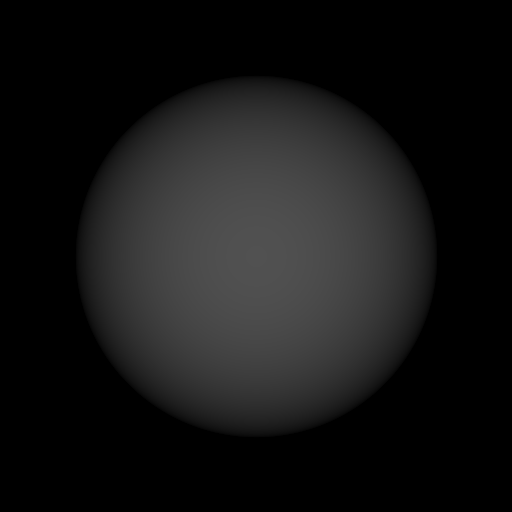Actual pixels
First actual image generated, using a “camera light”. The shading is too dark, for some reason I can’t figure out at the moment, so I guess tomorrow will be more of a debugging session than new feature creation.

Next related
Working camera
So yesterday’s attempt at capturing an image didn’t turn out so well, because I messed up the camera, or rather the vector algebra behind everything. When I realized what I had done, I instantly remembered that similar lesson from last year; because points have w=1, while vectors have w=0, almost all vector operations will get messed up by the extra 1, if you accidentally use a point instead. Or vice versa.
Previous related
Pixels on a canvas
Pretty much the whole point of a ray tracer such as this one is to render pretty pictures, and for that we’re going to need a canvas to render onto.
Surface normals
Today brings normal vectors into the mix, a critical component for shading computations; the normal vector of a surface at the point where it was hit by a ray, to be precise. Because the normal depends on the hit position on the surface, and we’ll need that too, we keep that around as well.
Intersecting spheres
The first piece of actual ray tracing: calculating the intersection between a ray and a sphere. To find the intersections, we need to solve the quadratic equation of the sphere being equal to the linear equation of the ray. The interpretation of imaginary roots is that the ray does not intersect the sphere.